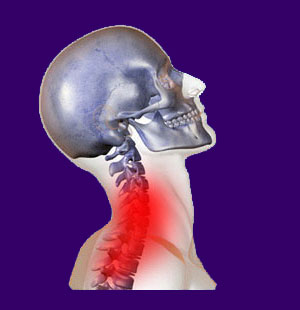
Patients may experience symptoms of neck pain, as well as a variety of related neurological effects, depending on the specific nature of their causative condition. Pain itself is just one of many potential manifestations of a larger symptomatic syndrome. Many patients might also experience other expressions, including burning, tingling, weakness or numbness in areas of the actual neck, upper back or shoulders. However, when spinal neurological roots are affected, these same symptoms can actually be expressed in areas of the body innervated by the impacted tissues, including the arms or hands.
If the cervical spinal cord is influenced by the causative processes, then symptoms can appear virtually anywhere in the body, as long as the location is below the problematic level of the vertebral column. This essay examines all the possible symptoms of a variety of neck pain conditions that can affect the cervical spine, the surrounding region and the remainder of the anatomy.
Expressed Symptoms of Neck Pain
Pain is certainly the biggest concern for most patients with acute or chronic symptoms. Neck pain can exist in the cervical area itself or may radiate between the shoulders, down one or both arms and even into the hands. Radiating pain in the upper extremities might indicate compression of a cervical nerve root within the lateral recesses or foraminal canals.
Headaches may also accompany neck pain syndromes, as can pain in the jaw or face. Chronic cervical headaches are often enacted by high level stenotic changes within the central vertebral canal.
Besides pain, many patients also suffer neurological symptoms which can express themselves locally or in other areas of the anatomy. Tingling, weakness and numbness are common expressions in the shoulders, arms and hands and can be very frightening to deal with, especially when symptoms are severe and functional disability occurs.
Lower body pain and neurological expressions are frequent signs of a symptomatic cervical spinal stenosis condition. Sciatica, incontinence, constipation, the inability to stand, and difficulty walking are all related symptoms for severely narrowed cervical canals.
Muscular neck pain conditions might be acute, but rarely require any professional treatment. However, it should be mentioned that since the upper back, neck and shoulder muscles are interdependent in their functionality; patients will often face truly debilitating pain in the entire region, unilaterally, from any significant strain or overuse condition.
Diagnosing Neck Pain Symptoms
In order to maximize the chances for achieving lasting relief from chronic neck pain symptoms, it is crucial to attain an accurate and correct diagnosis. While this sounds like common sense, it is also the necessary task that eludes most patients.
Mistaken diagnosis is a horrible problem in the back and neck pain industry and a great number of symptomatic issues are mistakenly identified in terms of causation. If the theorized source of pain is incorrectly ascertained, then all subsequent treatments will fail, since they are not aimed at the actual origin of pain. This is the main reason why so many neck pain treatments fail miserably.
To better the chances of achieving a valid diagnosis, we recommend that patients seek multiple opinions on the cause of pain, as well as undergo any and all diagnostic imaging and testing procedures that might be available to them. Statistically, simply consulting one doctor or chiropractor about chronic neck pain leads to disappointing therapy outcomes. Likewise, patients who do not receive MRI or CT imaging also suffer higher rates of misdiagnosis and ineffectual treatment.
Guidance on Managing Symptoms of Neck Pain
The neck is a vital anatomical location that contains the upper cervical spinal cord. Pain or other neurological symptoms here can be terrifying for patients, since significant upper spinal cord problems can result in paralysis, organ failure and even death. Remember that degenerative disc disease, bulging intervertebral discs and spinal osteoarthritis are incredibly common in the neck and are blamed for sourcing pain far more than they truly do. Remember also that many long-term pain syndromes can affect the soft tissues, even when coincidental spinal irregularities may be present. Chronic stiffness, tension or soreness in the muscular tissues might indicate a pathological soft-tissue condition as the underlying basis for pain. These varieties of neck muscle discomfort are known to defy treatment, especially within the traditional medical sector.
The muscles and nerves in the neck can be affected by ischemia, disease processes or idiopathic reasons, producing widespread and sometimes structurally-illogical pain syndromes in the head, neck, shoulders, arms and hands. If the virulent process affects the spinal cord as well, the symptoms might range wildly throughout the body in patterned or random expressions, making diagnosis that much more difficult.
In closing, the overall point of this essay is to teach patients that the symptoms of neck pain might be a determining factor in the diagnosis, but then again, they should only be part of the diagnostic evidence. Similar symptoms can come about from strikingly different causative processes, so no assumptions should be made as to the cause of any neck pain syndrome based on the expressions of the condition alone.
For best results, be sure to demand a thorough and exhaustive diagnostic process before agreeing to any type of ongoing, expensive or invasive care program.





